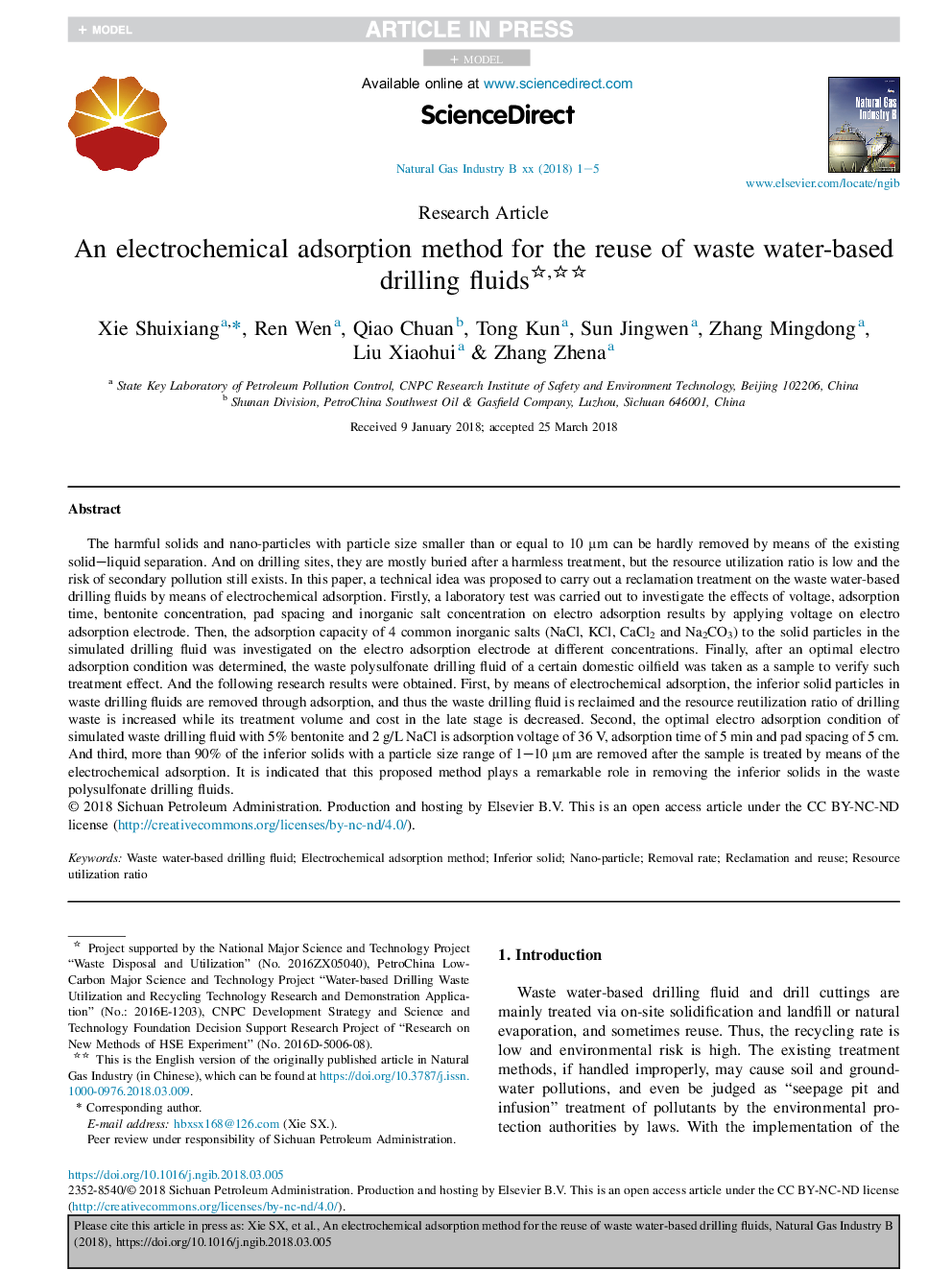| Article ID | Journal | Published Year | Pages | File Type |
|---|---|---|---|---|
| 11011048 | Natural Gas Industry B | 2018 | 5 Pages |
Abstract
The harmful solids and nano-particles with particle size smaller than or equal to 10 μm can be hardly removed by means of the existing solid-liquid separation. And on drilling sites, they are mostly buried after a harmless treatment, but the resource utilization ratio is low and the risk of secondary pollution still exists. In this paper, a technical idea was proposed to carry out a reclamation treatment on the waste water-based drilling fluids by means of electrochemical adsorption. Firstly, a laboratory test was carried out to investigate the effects of voltage, adsorption time, bentonite concentration, pad spacing and inorganic salt concentration on electro adsorption results by applying voltage on electro adsorption electrode. Then, the adsorption capacity of 4 common inorganic salts (NaCl, KCl, CaCl2 and Na2CO3) to the solid particles in the simulated drilling fluid was investigated on the electro adsorption electrode at different concentrations. Finally, after an optimal electro adsorption condition was determined, the waste polysulfonate drilling fluid of a certain domestic oilfield was taken as a sample to verify such treatment effect. And the following research results were obtained. First, by means of electrochemical adsorption, the inferior solid particles in waste drilling fluids are removed through adsorption, and thus the waste drilling fluid is reclaimed and the resource reutilization ratio of drilling waste is increased while its treatment volume and cost in the late stage is decreased. Second, the optimal electro adsorption condition of simulated waste drilling fluid with 5% bentonite and 2 g/L NaCl is adsorption voltage of 36 V, adsorption time of 5 min and pad spacing of 5 cm. And third, more than 90% of the inferior solids with a particle size range of 1-10 μm are removed after the sample is treated by means of the electrochemical adsorption. It is indicated that this proposed method plays a remarkable role in removing the inferior solids in the waste polysulfonate drilling fluids.
Keywords
Related Topics
Physical Sciences and Engineering
Energy
Energy Engineering and Power Technology
Authors
Shuixiang Xie, Wen Ren, Chuan Qiao, Kun Tong, Jingwen Sun, Mingdong Zhang, Xiaohui Liu, Zhena Zhang,
